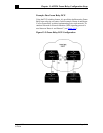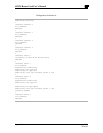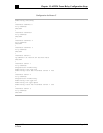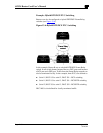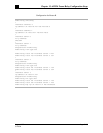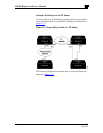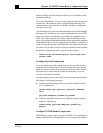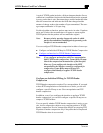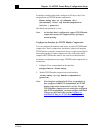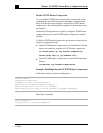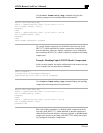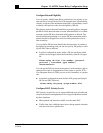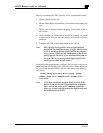
Chapter 13: AI2524 Frame Relay Configuration Steps
August 1997 Page 13-39
2524UM
interface buffers and lead to higher packet rate loss for both user dat
and routing updates.
To avoid such problems, you can create a special broadcast queue for
an interface. The broadcast queue is managed independently of th
normal interface queue, has its own buffers, and has a configurable
size and service rate.
A broadcast queue is given a maximum transmission rate (throughput)
limit measured in both bytes per second and packets per second. The
queue is serviced to ensure that no more than this maximum is pro
vided. The broadcast queue has priority when transmitting at a rate
below the configured maximum, and hence has a guaranteed minimum
bandwidth allocation. The two transmission rate limits are intended to
avoid flooding the interface with broadcasts. The actual transmission
rate limit in any second is the first of the two rate limits that is reached.
In interface configuration mode, create a broadcast queue:
frame-relay broadcast-queue
size byte-rate
packet-rate
Configure Payload Compression
You can configure payload compression on point-to-point or multi
point interfaces or subinterfaces. Payload compression uses the stac
method to predict what the next character in the frame will be. Becaus
the prediction is done packet-by-packet, the dictionary is not con
served across packet boundaries.
Payload compression on each virtual circuit consumes approximately
40 kilobytes for dictionary memory.
z
Configure payload compression on a specified multipoint inter-
face or subinterface:
frame-relay map
protocol protocol-address
dlci
payload-compress packet-by-packet
z
Configure payload compression on a specified point-to-point in-
terface or subinterface:
frame-relay payload-compress packet-by-
packet
Configure TCP/IP Header Compression
TCP/IP header compression, as described by RFC 1144, is designed to
improve the efficiency of bandwidth use over low-speed serial links.



